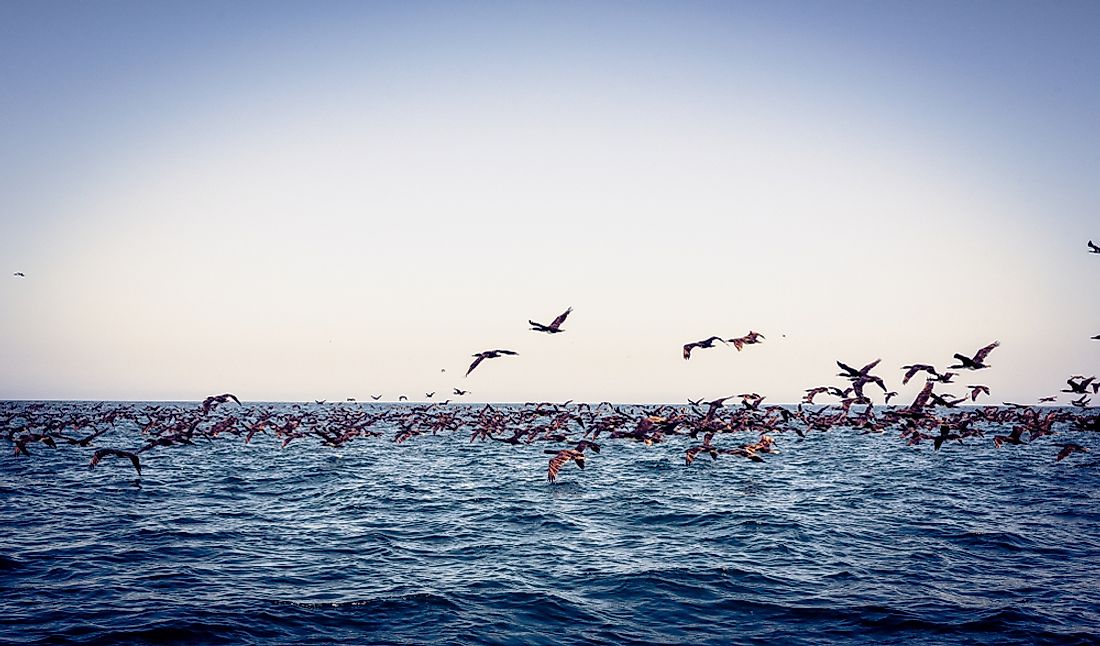What Is The Humboldt Current?

The Humboldt Current is an ocean current that flows northwards along the western coastline of South America and into the Southeast Pacific Ocean. The cold, low salinity ocean current is also referred to as the Peru Current. The current is an eastern boundary current which flows towards the equator, extending approximately 310-620 miles offshore. The Humboldt Current was named after a Prussian naturalist called Alexander Von Humboldt. In 1802, Humboldt published a book called “Cosmos” in which he reported the measurements of the current.
Features of the Humboldt Current
The Humboldt Current is usually slower and shallower compared to most ocean currents. The currents carry approximately 350 million–700 million cubic feet of water per second. This amount of water is considered little compared to most currents. However, Humboldt Current is one of the largest water currents in the world as it carries water for longer distances. The current flows northwards from the South Pacific Ocean, carrying waters for thousands of kilometers. The water then mixes with the warm waters at the equator, which marks the end of the Humboldt Current. The current is usually cold, except during El Nino events. Due to its cold nature, the currents leads to the formation of fog along the coastal regions of Peru, Chile, and Ecuador. Furthermore, the cold dry currents are responsible for the arid conditions along these coastal regions.
Effects of the Humboldt Current
The Humboldt Current has been recognized as the most useful eastern boundary current system. The currents affect both people and marine life. First, upwelling caused by these currents brings nutrients to the water surface. These nutrients are usually instrumental in the growth of phytoplankton, which is the primary source of food for most of the animals in the marine ecosystem. Secondly, these currents have been very useful in the fishing industry in South America. The current results to approximately 19% of the total marine fish caught worldwide. Some of the species commonly caught due to the blowing of the currents include sardines, jack mackerel, anchovies, and pelagic. Finally, these currents have a major influence on some of the South American countries. For instance, the cool breeze and the cool effects experienced in Ecuador, Peru, and Chile are attributed to the currents. Furthermore, the arid climate experienced in the Peruvian coastline, and the Atacama Desert in Chile, are as a result of the Humboldt Current.
Influence of El Nino on the Humboldt Current
The productivity of the Humboldt Current is directly influenced by the El Nino. When El Nino occurs, the upper regions of the oxygen minimum zone (where oxygen saturation is lowest) and thermocline deepens to over 600 meters. At this point, nitrogen is lost and export of carbon also decreases. The velocity of the poleward current also increases during El Nino events. The overall effect of El Nino is the reduction in productivity with the sharp decline in fish population. During non El Nino years, there is a high concentration of nutrients and recycling of nitrogen, providing a suitable breeding ground for fish and other aquatic animals.











